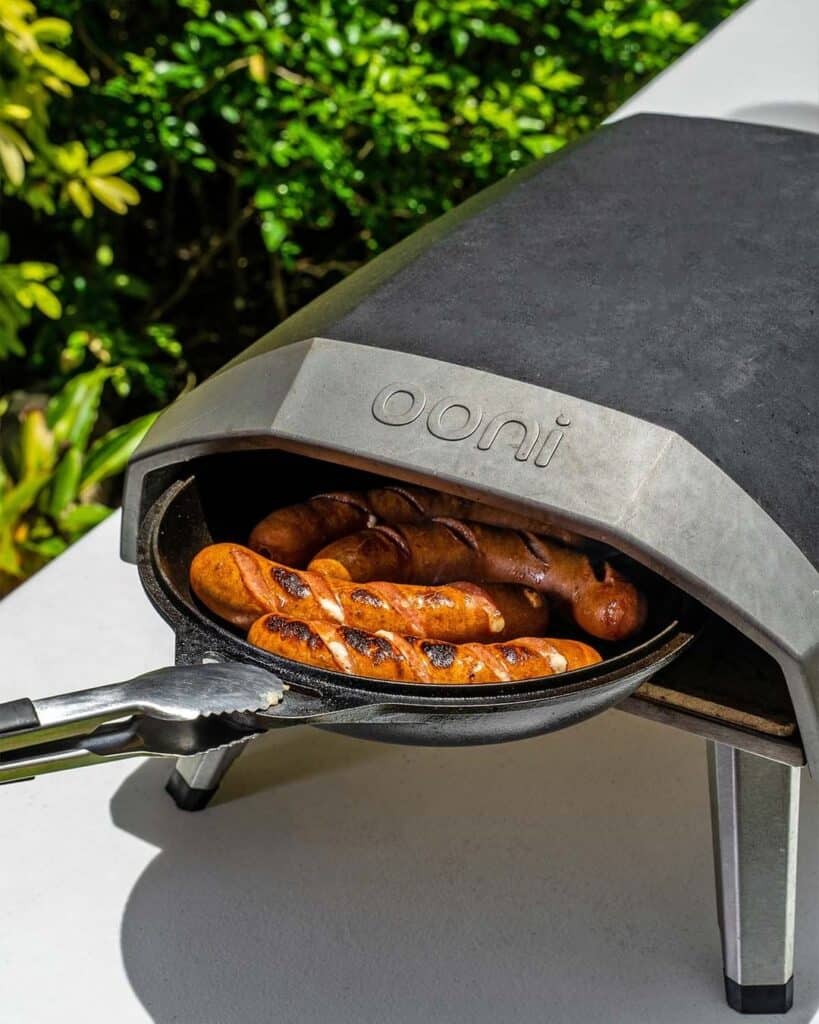If you’re having trouble deciding whether investing in a pizza oven is worth it, consider this: I don’t use my Ooni oven just for pizza alone. Summer’s here, it’s absolutely stunning outside and there’s little reason for me to stay inside with a hot oven. It can be a brutally hot experience cooking indoors.
There’s no limit to the kinds of things you can prepare in your Ooni oven. You can be as adventurous and as experimental as you like, so long as you realize that some experiments may require a good deal of cleaning when it comes to the pizza stone.

In this post, I’ll go over some of the other things I’ve personally prepared in my Ooni with fantastic results, and then I’ll speculate on just what else both you and I want to give a try.
Food You Can Cook in an Ooni
One of the most incredible things I learned working with an Ooni is how versatile they can be. No different from the oven in your kitchen, albeit at higher temperatures than you can normally safely reach, an Ooni can handle just about anything. How the food turns out, however, depends on how closely you watch it.
And once you buy one, you can easily make:
- Roasted vegetables
- Slow-cooked meat
- Baked/grilled fish
- Smoked meat
- Barbecued meat
- Flamed ribeye
- Jacket Potatoes
- Focaccia and flatbreads
- Bread loaves
- Shrimp and other sides
- Hot desserts
- Stews/Casseroles
Oonis can easily be adjusted with tool kits. While a pizza peel usually comes with one, you may need to stock up on other tools by yourself, but they’re worth the trouble. You’ll need things like a cast-iron skillet, smoking kits and casserole dishes.
But the important thing you’ll need to do is adjust the temperature depending on what you cook in it. Pizza gets cooked at an exceptionally high temperature, often upwards of 750 degrees fahrenheit. But since we know heat is not relative, other foods can’t stand such temperatures.

Here’s an easy guide to cooking other foods using an Ooni:
Temperature Food
90-120 Casseroles, slow cooked meats, ribs
150-175 Desserts
200-230 Crusty breads, focaccias
260-290 Roasted turkey, fish and potatoes
290-320 Grilled steak, shrimp and sardines
320-350 Vegetables
Any higher and you’re headed to pizza country, and you don’t want to prepare all your food on fires that high. Which is perfectly fine, nothing against a good pizza, but you should experiment with your Ooni. You’ll be pleasantly surprised by what it’s capable of cooking.
When you’re cooking various foods, part of experimenting is knowing just how close you want to get it to the embers to perfectly transfer the heat. This is just a matter of practice. After some time, you’ll start to get the hang of it.
The Tools You Use Are Just As Important as The Ingredients

Any kitchen tools you use when cooking with your Ooni, or cleaning it, are going to eventually affect the results of what you cook. Pizza stones are made to collect moisture, so when you’re cleaning them it can be quite difficult due to how limited you are in what you can use.
You want to avoid using a lot of water and any cleaning products, not even soap. I had a friend who once ignorantly scrubbed with a bottle of soap, as he would any kitchen item, only to find the next thing he cooked on it tasted like Dawn.
Cast iron skillets are also a bit hard to work with. They’re one of the heaviest cooking pans available, and they can leave scorch marks on your stone. Metal spatulas are equally harmful, causing scratches.
Still, there’s something to be said for your stone having character, so you don’t want to effectively remove all the stains. Stains can add a bit of seasoning to what you cook, making every meal that much more flavorful.
Part of the joy of cooking a variety of foods on your Ooni is that they change the taste of what you have. In my book, that’s a plus so long as you always use the best ingredients and clean with a healthy bit of caution.
It’s also important that you only work with cookware that can handle the heat of a wood-fired oven, which won’t necessarily be the same equipment you work with indoors.
In short, there’s no limit to what you can cook using an Ooni, and the pleasure of cooking outdoors is one of the key advantages of owning one.